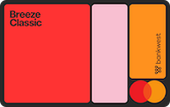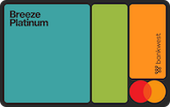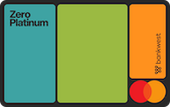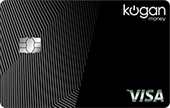
Get help building your credit score.
What is a credit builder credit card?
Australia doesn’t have dedicated credit builder credit cards, but using any credit card responsibly can help improve your credit score over time.
Getting approved for a credit card typically requires a good credit history and score. If your credit score is low or you have a limited credit history, approval can be challenging. However, if you’re applying for your first credit card, you can look for options with lower credit limits, which are often more accessible to those with limited or poor credit history.
These cards may come with higher interest rates, but by using them responsibly — making on-time payments and keeping balances low — you can demonstrate good financial behaviour and gradually improve your credit score.

The low down on building credit.
How do credit builder cards work?
Credit builder credit cards are designed to help individuals with limited or poor credit history improve their credit score over time. They work like regular credit cards but may come with lower credit limits and higher interest rates. By using the card responsibly — making on-time payments and keeping the balance low — cardholders can demonstrate good financial behaviour, which is reported to credit bureaus and can gradually boost their credit score.
In Australia, dedicated credit builder credit cards are not available. However, individuals with limited or poor credit history can consider applying for low-limit credit cards or store-branded credit cards. These options often have relatively more flexible eligibility requirements, making them accessible to a broader range of applicants. However, due to the increased risk for providers, these cards may come with higher interest rates and limited benefits.

Score more. Worry less.
How to build credit with a credit card
Using a credit card strategically can positively impact your credit score. Key steps include:
- Making on-time repayments: Always pay at least the minimum amount by the due date to avoid late fees and any adverse reporting on your credit file.
- Keeping credit utilisation low: It’s generally helpful to not spend up to your entire credit limit. A lower credit utilisation shows lenders that you can manage credit responsibly without relying too heavily on borrowed funds.
- Avoiding unnecessary applications: Too many credit applications in a short time can negatively impact your score. If your credit card application was rejected, try to find out the reason and work on it before applying for another card.
- Maintain long-term accounts: The length of your credit history can impact your credit score. Keeping an account open and in good standing over time helps build a strong credit profile.

Your score. Decoded.
What is a good credit score?
In Australia, credit scores range from 0 to 1,200, depending on the credit reporting agency. However, regardless of the agency, credit score bands are generally similar.
In most cases, a good credit score falls between 625 and 799, while 800 and above is considered excellent. A higher score can improve your chances of approval for credit products with better terms and lower interest rates.
| Credit band | Experian | Equifax |
|---|---|---|
| Excellent | 800-1,000 | 833-1,200 |
| Very good | 700-799 | 726-832 |
| Good | 625-699 | 622-725 |
| Fair / Average | 550-624 | 510-621 |
| Weak / Below average | 0-549 | 0-509 |

Expert opinion
How you could use a credit card to help build your credit score

David Boyd, a credit card expert and co-founder of Credit Card Compare advises that responsible credit card use is key to building a strong credit history.
Using a credit card wisely is one of the most effective ways to build a strong credit history. Always aim to pay your bill on time, keep your balance well below your limit, and avoid taking on unnecessary debt. Even small, consistent positive habits can have a significant impact over time. Checking your credit report regularly as mistakes can easily be reported, and catching errors early can help you maintain a healthy credit profile.

Your management vs. your score.
How your credit card affects your credit score
Positive impact
- On-time payments.
- Low credit utilisation.
- A long credit history.
Negative impact
- Missed payments.
- Maxed-out credit limits.
- Multiple credit applications.

Credit boosting tips.
Building credit without a credit card
Thanks to Comprehensive Credit Reporting (CCR) in Australia, your credit report now includes both positive and negative behaviours. This means lenders don’t just see defaults or missed payments—they also see good habits like paying bills on time and managing credit responsibly. Here’s what can help boost your credit score:
- Pay all bills on time. This includes utilities, phone plans, and loans. Late payments can stay on your credit report for years.
- Limit credit applications. Too many applications in a short period can hurt your score. Apply only when necessary.
- Manage existing debts well. Paying down loans consistently shows lenders you’re financially responsible.
- Check your credit report regularly. Ensure there are no errors or fraudulent activities affecting your score.
A credit card can be a helpful tool, but it’s not the only way to build credit. Good financial habits over time matter more than any single product.

Aussies weigh in.
What Australians say about using a credit card to build credit
Opinions on whether a credit card helps improve your credit score in Australia are mixed. While some believe it has a small positive impact, others argue it’s not as crucial as it is in countries like the U.S.
One Redditor explains that recent changes in Comprehensive Credit Reporting (CCR) mean that lenders now see more details about how you manage credit:
No doubt gonna get slammed for this comment but having a credit card or any facility really can actually help your credit score a little these days.
They go on to explain that before the CCR changes, only applications and defaults showed up on your credit file. Now, lenders can also see:
- Whether an approved facility was actually used.
- The repayment history of credit accounts.
- Credit limits and outstanding balances.
This means using a credit card responsibly can slightly improve your score after 6–12 months. However, they add:
I do need to stress that having a simple credit card won’t drastically improve your credit score but it does help in a small way.
Another Redditor points out that Australia’s credit system doesn’t function like the U.S., where a credit score is the primary factor in loan approvals:
I’m not in the Banking or Finance industry so perhaps someone else can give you some further insight, however my understanding is that in Australia we do not use the American system for credit scores when assessing the suitability of an applicant for credit.
This is an important distinction. Unlike in the U.S., where a high credit score can be essential for accessing loans, Australian lenders assess applicants based on a broader financial picture rather than just their score.
As opposed to a 'positive' score or rating, applicants are usually judged on their ability to pay after assessing their actual financial situation (ie assets, liabilities, income, expenses) and then applying the applicable 'stress test' (ie theoretical increase in rates by a minimum percentage etc.).
This means that even if you boost your credit score with a credit card, lenders will still evaluate your income, expenses, and overall financial situation before approving a loan.

First card. Lasting impact.
An example scenario of building a credit score
Emma had just graduated from university and started her first full-time job. She wanted a credit card to manage everyday expenses and build her credit score for future financial goals, like a car loan or home loan.
However, without an established credit history, she found it difficult to get approved for a standard credit card with competitive features. She soon discovered that store-based credit cards often have lower entry requirements. With a year of stable income, she could demonstrate her repayment capacity, making her eligible for a low-limit card despite having no prior credit history.
Emma chose a store-branded credit card with no annual fee because it was easy to manage and low-risk.
- It had a $1,000 minimum credit limit, making it easier for first-time users to control their spending.
- There was no annual fee, so she wouldn’t pay extra just for having the card.
- She could earn store-based reward points on purchases, adding extra value.
Once approved, Emma focused on building her credit score through smart credit management:
- She kept her spending low and set up automatic payments to clear her balance in full each month, avoiding interest charges.
- She paid all her bills on time, including rent, utilities, and her phone plan, to demonstrate financial reliability.
- She avoided applying for multiple credit products, preventing unnecessary inquiries on her credit file.
- She checked her credit report to monitor her score and correct any errors.
Her credit score improved after several months of responsible spending and on-time payments. She is now eligible for a higher-limit credit card with better rewards. She can also access other financial products, such as personal loans or car finance, giving her more options for future financial goals.








